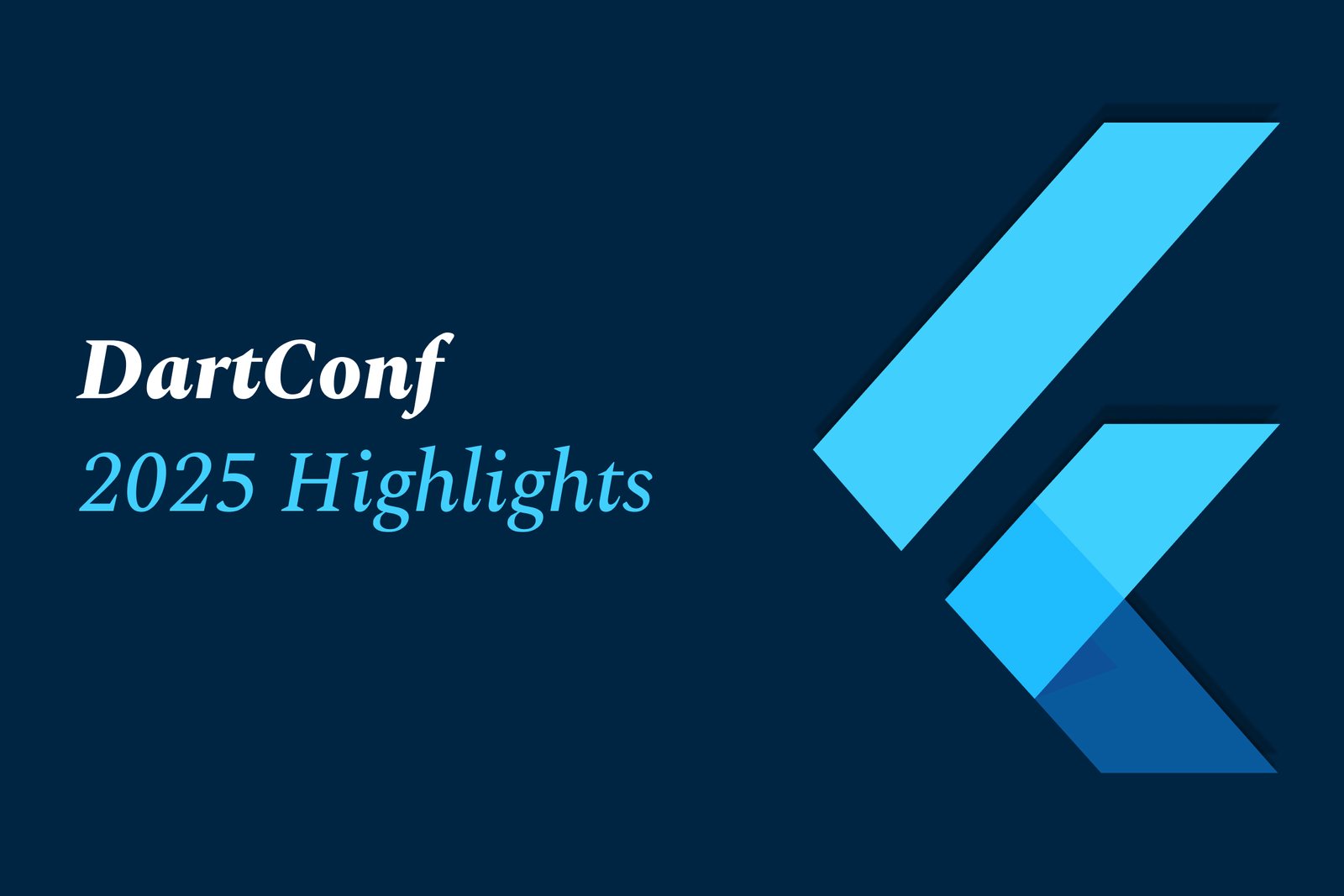DartConf 2025 Highlights
DartConf 2025 showcased the latest advancements in Dart and Flutter, highlighting new AI toolkits, enhanced cross-platform support, improved developer tools, and stronger community engagement—empowering developers to build smarter, faster, and more inclusive apps.
DartConf 2025 Highlights
1 ) Introduction to DartConf 2025
DartConf 2025 showcased the latest advancements in the Dart programming language and Flutter framework, highlighting innovations, developer tools, and community contributions that continue to drive the ecosystem forward.
2 ) Key Announcements and Features
Introduction of new AI Toolkits integrated with Flutter, enabling enhanced user experiences and feature integration.
Custom Large Language Model (LLM) providers demonstrated, empowering developers to build intelligent chat clients and AI powered apps efficiently.
Significant improvements in SDK with better tooling support, version upgrades, and simplified environment setups.
3 ) Developer Experience Enhancements
Advanced state management techniques and declarative UI improvements focused on productivity and code simplicity.
Enhanced adaptive and responsive design capabilities allowing Flutter apps to better support various platforms, including mobile, web, and desktop environments.
Expanded accessibility and internationalization features to broaden app reach and inclusivity.
4 ) Cross Platform Development Updates
Strengthened Flutter support for Android, iOS, web, and desktop with specialized guides for developers migrating from native frameworks such as Jetpack Compose, SwiftUI, UIKit, and React Native.
New integrations with Firebase, including user authentication flows and multiplayer gaming support, enabling rich multi platform application development.
5 ) Monetization and Media Integration
Integration of Google AdMob enhancements for advertising with multimedia ads including video, native banners, and mediation tools.
Support for in app purchases and payment solutions like Google Pay package to help monetize Flutter apps effectively.
6 ) Performance and Debugging Tools
Debugging improvements powered by Crashlytics providing robust error reporting and smoother issue tracking.
Updates to animation frameworks and gesture handling ensuring smoother user interactions and visually compelling UI transitions.
7 ) Community and Learning Resources
Emphasis on educational content with new tutorials, release notes, and best practice guides to assist developers at all skill levels.
Encouragement for community engagement through case studies, project journey reports, and collaborative open source contributions.
8 ) Looking Forward
DartConf 2025 reaffirmed commitment to evolving Dart and Flutter as premier tools for building modern, efficient, and expressive applications across platforms, supported by an active and growing global community.
https://justacademy.in/news-detail/flutter-ai-chatbot-integration-guide
https://justacademy.in/news-detail/flutter-on-raspberry-pi:-new-examples
https://justacademy.in/news-detail/trends-in-cross-platform-development-2025
https://justacademy.in/news-detail/flutter-design-tokens-implementation
https://justacademy.in/news-detail/ai-in-flutter:-smarter-ux-and-features
Related Posts
Java supports GDPR and data privacy by enabling secure data handling through encryption, controlled access, and precise data management. It allows developers to minimize PII exposure, ensure data confidentiality, and design workflows that comply with data protection regulations effectively.
Java code quality tools have evolved to include advanced static analysis, integrated security checks, and AI-powered code reviews. These updates help developers detect bugs, enforce coding standards, and enhance security, streamlining the development process and improving overall code reliability.
Java remains a cornerstone in big tech companies, evolving with modern features like records, pattern matching, and virtual threads. Its robust ecosystem, enhanced performance, and growing AI integrations keep it vital for both legacy systems and innovative new projects.
Java and CI/CD pipeline optimizations streamline Java application development by automating builds, tests, and deployments. They improve efficiency through parallelization, caching, and secure secrets management, enabling faster feedback loops and more reliable, scalable software delivery.
Java supports modern cryptography standards through its flexible Java Cryptography Architecture (JCA), enabling integration of advanced algorithms like AES, EdDSA, and post-quantum tools. Libraries like Bouncy Castle offer FIPS-certified, hardware-accelerated implementations for secure development.
Java 23 enhances record patterns by enabling concise, direct destructuring of record components within pattern matching, simplifying type checks and data extraction. This improvement boosts code readability and expressiveness by reducing boilerplate in handling immutable data classes.
Java remains a top choice for mobile app backends, powering scalable, secure, and high-performance server-side solutions. Latest trends include cloud-native microservices, reactive programming, and enhanced JVM optimizations, enabling efficient, flexible, and robust mobile backend development.
Java SE 24 and LTS Java SE 21 offer enhanced features and performance, while Apache Spark 4.0.0 introduces Scala 2.13 support and advanced ML and SQL capabilities. Together, they empower developers to build scalable, high-performance data applications with modern tools.
JUnit 5 modernizes Java testing with a modular architecture, improved assertions, and seamless Java 8+ support. Beyond JUnit, tools like Mockito and AssertJ enhance mocking and assertions, creating a powerful, flexible ecosystem for writing clean, efficient Java unit tests.
Java plays a pivotal role in cloud automation tools by providing a robust, platform-independent language used to build scalable automation frameworks like Jenkins and Selenium, enabling efficient CI/CD pipelines, testing, and orchestration across diverse cloud environments.










